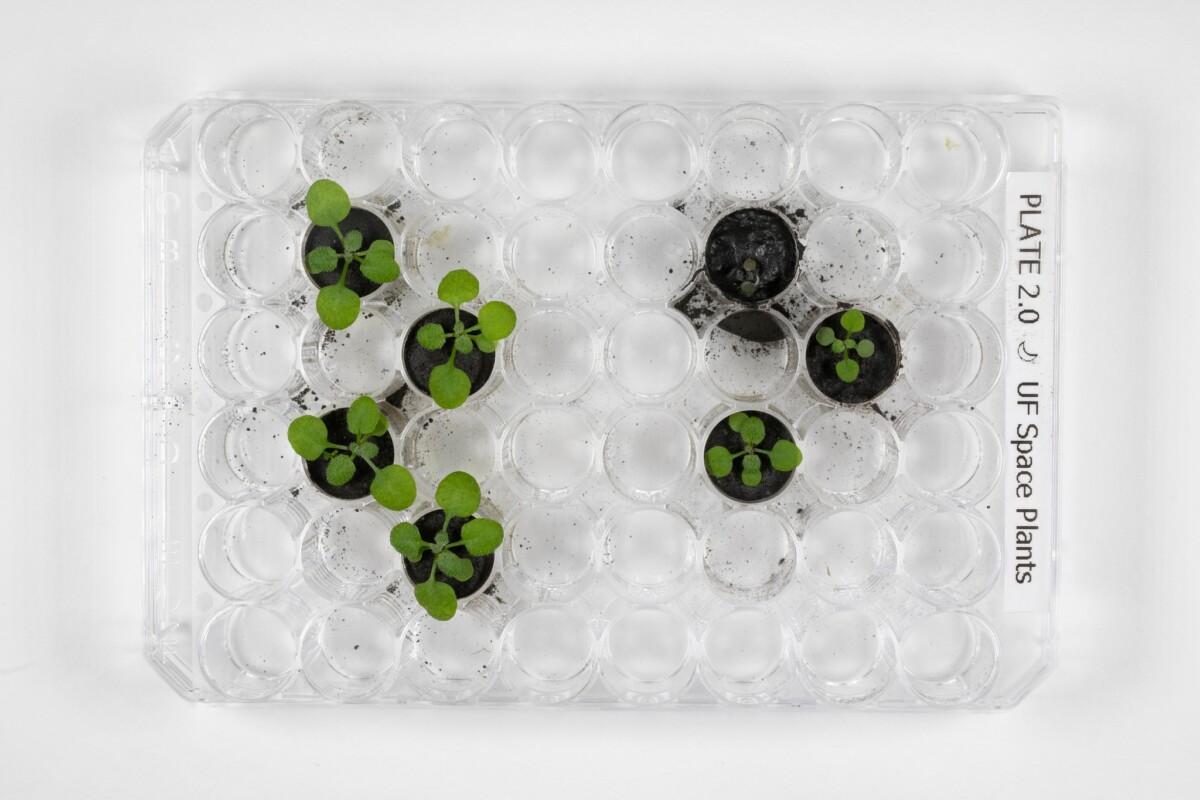PHOTO | Space herbs: Scientists have grown plants in soil from the moon

In a remarkable event, the first of its kind, scientists were able to breed plants in lunar soil using samples collected during missions "ApoloOn the Moon. This is the first time plants have sprouted and grown on Earth in soil from another celestial body. CNN.
The research could lay the groundwork for growing plants that provide oxygen and food to the Moon, which is timely as NASA's Artemis program seeks to take the first woman and dark-skinned first person to the lunar south pole during of this decade.
But experiments also reveal how stressful it is for plants to grow in a lunar regolith or soil that is different from the Earth's natural habitat.

Various plant species, including food crops, have been part of the space shuttle and the International Space Station. Plant specimens have been used to prove that specimens from the Moon are not harmful to life on Earth.
"The plants helped to establish that soil samples returned from the moon did not contain pathogens or other unknown components that would harm terrestrial life, but those plants were only pollinated by the lunar regolith and were never actually grown in it," said the co-author of study, Anna-Lisa Paul, professor of horticultural science at the University of Florida.

Paul and study co-author Rob Ferl, a professor of horticulture at the University of Florida, wanted to go a step further and see if the seeds would grow in lunar soil.
"For future, longer space missions, we may use the Moon as a hub. What will happen if you grow plants on lunar soil, something that is completely outside the evolutionary experience of the plant? What would plants do in a lunar greenhouse? "Can we have lunar farmers?"
The experiment is being prepared 15 years after the researchers made their first proposal and request for lunar specimens. The request was approved 18 months ago.
The research team asked NASA for 4 grams of lunar material collected during the Apollo 17 mission. Ryan Zeigler sent them a total of 12 grams (2,7 teaspoons) of lunar specimens collected from the Apollo 11, 12 and 17 missions.
"It made a big difference and allowed us to look deeper into the science and effects of lunar regolith on plants than we could otherwise do," Paul said.
Researchers used pots the size of a thimble. They filled each pot with a gram of lunar soil, added nutrients and water, and a few seeds of Arabidopsis thaliana, a small flowering plant native to Eurasia and Africa.

This plant is an attractive plant specimen for researchers because it has been well studied and its genetic code has been mapped, which has allowed researchers to study how extraterrestrial soil affected the plant's gene expression. The plant was already on the space shuttle and space station, providing the team with space comparison data.
To the surprise of the researchers, almost all the seeds planted in the dark lunar soil actually sprouted and began to grow.
"We did not anticipate that." "Growth has shown us that lunar soils do not interrupt the hormones and signals involved in plant germination."
However, Arabidopsis sprouts showed signs of struggle as they adapted to the lunar soil. The seedlings were smaller, grew more slowly, and differed in size from those grown on Earth. The roots were stunted. Some of the plants showed reddish-black pigments in the leaves, a sign of stress.
Researchers want to do more research to understand how plants in the lunar environment can change the moon's soil.


